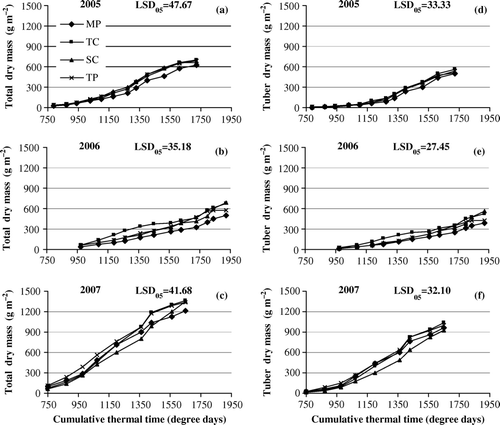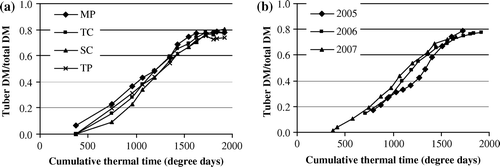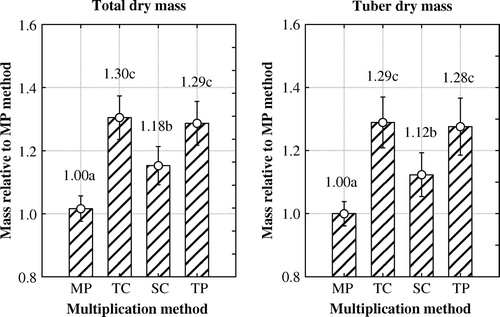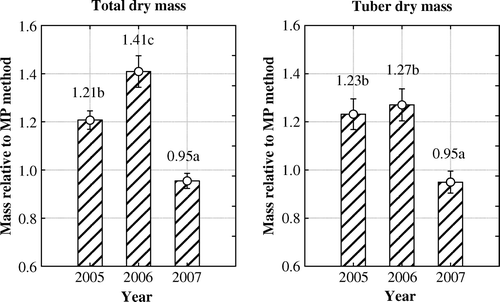Figures & data
Table I. Mean temperature, total precipitation and total radiation from June to September in the experimental field at Saku.
Figure 1. The dynamics of total dry mass of potato plants (a–c) and dry mass of tubers (d–f) in 2005–2007 as the mean of two varieties. Plotted as moving average over three sample times (over two in the case of the first and the last dates). Multiplication methods: MP – in vitro micro-plants; TC – tip-cuttings; SC – stem-cuttings; TP – truncated plants.

Table II. The dynamics of total dry mass of potato plants multiplied as in vitro micro-plants (MP), and differences from it for other multiplication methods: tip-cuttings (TC), stem-cuttings (SC) and truncated plants (TP) in 2005–2007.
Table III. The dynamics of tuber dry mass of potato plants multiplied as in vitro micro-plants (MP), and differences from it for other multiplication methods: tip-cuttings (TC), stem-cuttings (SC) and truncated plants (TP) in 2005–2007.
Figure 2. Ratio of tuber dry mass (DM) to the total dry mass of potato plant, averaged for multiplication methods over different years (a) and for different years over multiplication methods (b). Initial points in figure (b) reflect only the data of 2007. Multiplication methods: MP – in vitro micro-plants; TC – tip-cuttings; SC – stem-cuttings; TP – truncated plants.

Table IV. Mean maximum daily dry mass increase per year and per multiplication method of total potato plants and tubers.
Figure 3. Differences between multiplication methods in the total dry mass and tuber dry mass of potato plants determined relative to in vitro micro-plants multiplication method over three experimental years and two varieties. Multiplication methods: MP – in vitro micro-plants; TC – tip-cuttings; SC – stem-cuttings; TP – truncated plants. Different letters indicate significant differences (p < 0.05). Vertical bars denote 0.95 confidence intervals.

Figure 4. Differences between years in the total dry mass and tuber dry mass of potato plants determined relative to in vitro micro-plants multiplication method over all multiplication methods and two varieties. Multiplication methods: MP – in vitro micro-plants; TC – tip-cuttings; SC – stem-cuttings; TP – truncated plants. Different letters indicate significant differences (p < 0.05). Vertical bars denote 0.95 confidence intervals.
